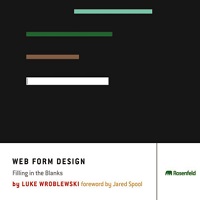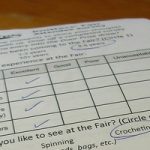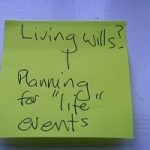“An election is not held to test voters’ ability to follow instructions, but to receive instructions from the voters as to which candidates they will elect. No legitimate public purpose is served by designs that distort those instructions.” It’s goodContinue reading… Delivering Better Ballots
Author: Caroline Jarrett
Usability of content is plain language: the USA Plain Language Act
An exciting thing happened in the USA on 14th April 2008. It didn’t quite manage to make it onto the national news – that day, we were mostly hearing about the Pope’s visit to the United States. Any ideas? Any clueContinue reading… Usability of content is plain language: the USA Plain Language Act
People before pixels: what to think about before you start
Luke Wroblewski asked me to contribute some thoughts to his book “Web form design: filling in the blanks”. Here’s what I wrote. I love forms, mostly because they offer so many opportunities for improvement. And I love discussing forms withContinue reading… People before pixels: what to think about before you start
Surveys – what is an acceptable response rate?
It’s been a while since I ranted on about response rates on surveys. In that article, I took the view that “2% is a terrible response rate” and had a few reasons why and tips for doing better. Recently, I’veContinue reading… Surveys – what is an acceptable response rate?
Good headings help, bad headings hurt
I’ve been on the road recently, teaching my ‘Editing that Works’ workshops to teams of web content providers in a government department. ‘Choose what to say,’ I urge them. And do it like this: apply temporary headings to your text,Continue reading… Good headings help, bad headings hurt
How to get clients to look at wireframes properly
It was the same old story. I was working with Whitney Quesenbery on some wireframes for a client’s website. As usual, she’d done a lovely job on the design. As usual, I’d fussed around with content. We’d done our usualContinue reading… How to get clients to look at wireframes properly
Colons at the end of labels – revisited
In 2006, I wrote twice about colons on the end of labels on forms. This is the second of those posts. I’ve updated it in 2025 to reflect on how the topic has changed in the past 19 years. InContinue reading… Colons at the end of labels – revisited
Colons at the end of labels?
This post dates from May 2006. I’ve updated it with my views in 2025. A month later in June 2006, I wrote another one: Colons at the end of labels – revisited, and in 2025 I updated that one too.Continue reading… Colons at the end of labels?
Matters of life and death: an investigation of “living wills” and other advance directives
Earlier this year, we learned of the bitter legal battles over Terri Schiavo. Her husband and her parents disagreed on whether to continue to give her treatment after she collapsed into a coma seven years ago. Like Terri, I haveContinue reading… Matters of life and death: an investigation of “living wills” and other advance directives
Sentence or title case in ISO-9241:1998
Update in 2025. This article was published in 2005 and reflected the standards available then. ISO 9241:1998 was withdrawn in 2021. Back in the 2000s, we referred a lot more to ISO standards, Twenty years later, we’re more likely toContinue reading… Sentence or title case in ISO-9241:1998









